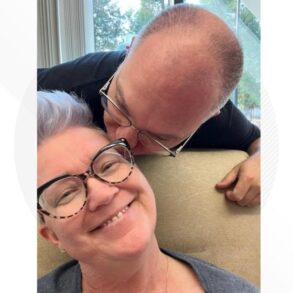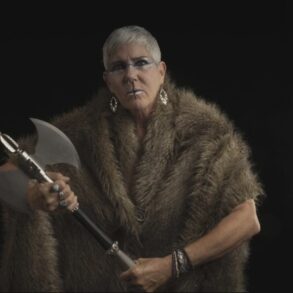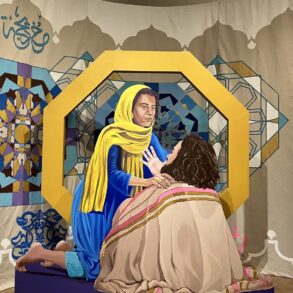
Almaty, Kazakhstan – From 17–19 September, the UN Women “Making Every Woman and Girl Count” regional programme and the School of Data hosted a Gender Data Art Residency “Art-Kazan: Where Art Meets Data”. This event brought together 18 talented artists to turn data into captivating works of art, highlighting critical gender issues and promoting women’s and girls’ rights.
Inspired by the traditional kazan pot, a symbol of unity and shared cultural heritage, the Art-Kazan initiative seeks to elevate the data literacy of artists from across Central Asia. It empowers artists to create compelling and impactful artworks using gender data, sparking discussions and debates on emerging gender equality issues in the region and driving transformative change. Additionally, Art-Kazan fosters collaboration and networking, bringing together diverse perspectives and building a supportive, creative community of women’s rights advocates.
“Data visualization and art are powerful tools for revealing gender inequalities and social injustices. With data, we rigorously document and communicate these issues to a wider audience, making it clear this inequality is real and happens every day,” underlined Stefanie Posavec, a renowned data visualization and storytelling expert from the United States and United Kingdom, during her session on data art storytelling . “By transforming data into art, rather than charts, we create emotional works that engage viewers and incite empathy. The deeper connection makes the data more compelling and inspires the viewer to advocate for change.”
These artists’ deep dive into the world of gender data started with an open call for applications that garnered over 200 applications from creative talents across Central Asia who were eager to elevate women’s voices through data-driven art. Sixty-five shortlisted applicants engaged in five insightful webinars on data art, data sources, analysis and visualization by experienced experts and mentors. Ultimately, 18 artists from Kazakhstan, Kyrgyzstan, Tajikistan, Turkmenistan and Uzbekistan were selected for the art residency, with the goal of crafting innovative data art projects addressing pressing issues, such as: violence against women and girls, biased gender norms and stereotypes, sexual and reproductive health rights, inequalities in STEM employment, the gender pay gap, feminization of poverty and specific challenges faced by older women.
“Art, data and women’s rights – three passions of mine – have come together in a unique and vibrant project at Art-Kazan,” shared Ekaterina Sanamiants, an artist from Tajikistan and winner of the social media contest held during the residency. “By encoding gender pay gap data into traditional ceramic patterns, I aim to tell a story that resonates and inspires change.”
Another artist from Kazakhstan, Galina Kolomenskaya, said: “It’s fascinating to discover new perspectives and to see data not just as numbers, but as images representing human journeys and moments of fate that can be found within dry statistics.”
This residency not only provided a space for artistic expression and capacity-building but underscored the vital role of gender data in conceptualizing their art projects and telling compelling and evidence-based stories that challenge the status quo and inspire action.
While many participants (72%) had little to no experience with social and gender equality projects before the residency, 94% felt confident about integrating gender equality issues into their work by the end. Additionally, 94% of participants reported that they had improved their skills in using visual elements, metaphors, creative materials and methods to encode gender data in their art projects. Moreover, 72% of participants were able to refine their creative concepts by integrating gender data insights in their artwork prototypes, a big jump from just 22% on the first day, demonstrating how effectively they applied their newly acquired data literacy skills.
“While many see data as dry tables or charts, in the hands of an artist, it can become something truly remarkable,” highlighted Nadezhda Andrianova, designer, artist and data visualization trainer from the School of Data. “Blending artistic creativity with statistics that shed light on pressing social issues can elevate the conversation with the audience to a whole new level.”
The residency culminated in final pitches of the data art projects, which will be further refined with the help of substantive mentorship by UN Women and the School of Data. The top art pieces will be featured in an international exhibition by the end of 2024.
The opinions and views expressed here do not necessarily reflect the views of UN Women, the United Nations, or its Member States.








